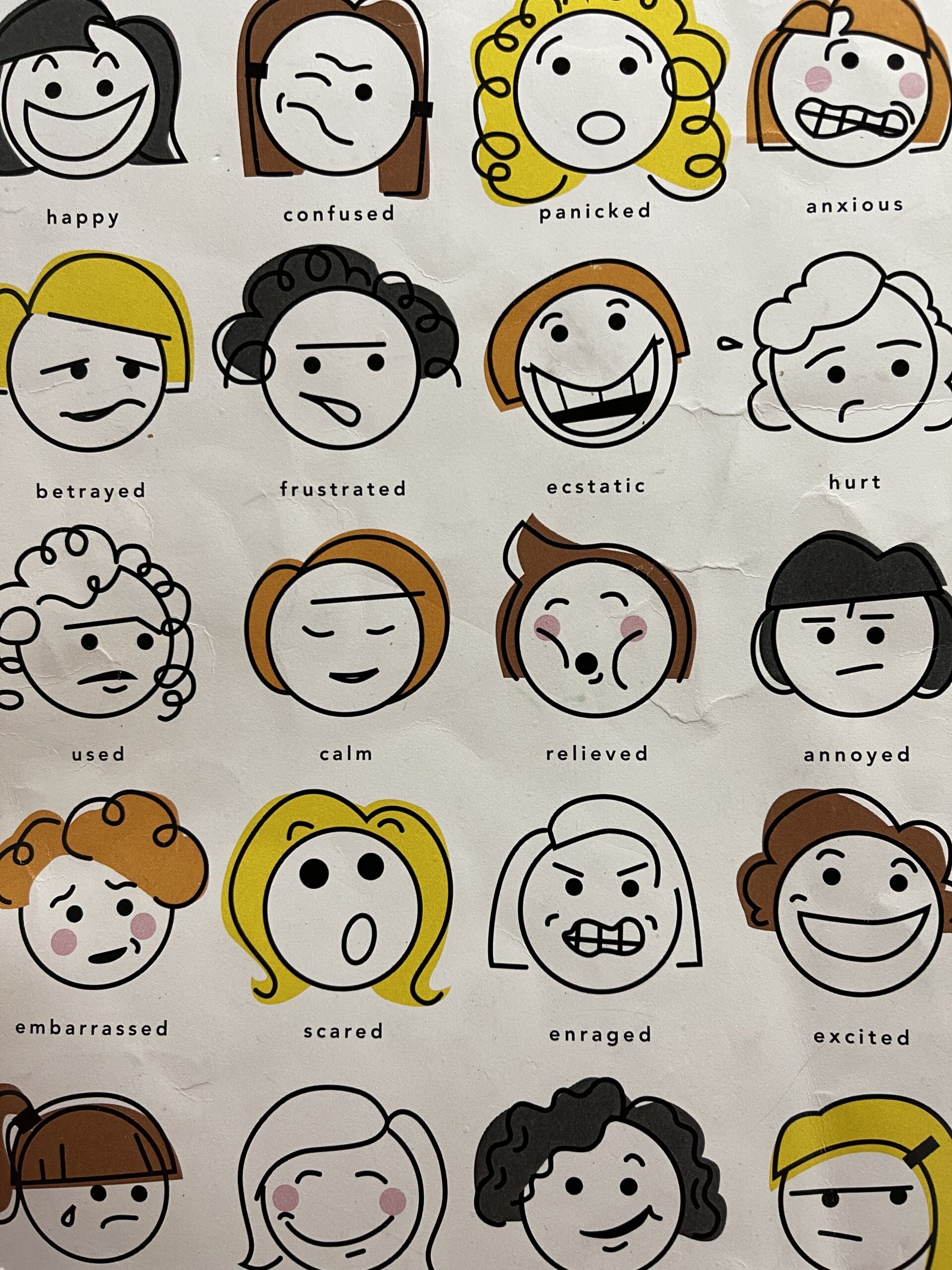12 Ways to Tune Up Emotional Literacy Skills
Teaching children social-emotional skills is one of the greatest gifts you can give. Few skills increase children’s confidence, social competence, empathy, resilience, and self-esteem more because kids need them in every area of their lives. So what’s the problem? It’s this: today’s teens would rather text than talk. Girls spend (on average) more time on social networking than boys and send more texts – about 100 a day. And then came a Pandemic and Social Distancing where opportunities to learn emotional literacy face to face diminished.
Prior to COVID-19, a survey by Common Sense Media found that the average time per day that American teens were plugged into some kind of digital device was at least 7 hours a day-and that did not include homework. And then came a distance learning when children’s screen time soared alarming both parents and researchers. Over all, children’s screen time had doubted by May 2020 as compared with the same period in the year prior. The fact is, you don’t learn social-emotional skills and emotional literacy with emojis.
The Value of Social-Emotion Connection
Research by Princeton’s Clifford Nass, found that the single predictor of healthy emotional interactions is lots of face to face communication. Kids who spend more time interacting via a screen than in person do not get sufficient practice in observing and experiencing true emotions and developing crucial offline skills of social and emotional intelligence. What’s more, face to face communication is the best way to help our children develop empathy. Without those skills our kids are less equipped to successfully navigate their social world. Do make sure you are striking the balance of unplugged vs. plugged in times in your home. Ensure that you have sacred, unplugged family times so you can all enjoy one another in REAL time!
We also know that many kids have difficulty reading emotions. Duke and UCLA are just two of the many universities researching ways to help children diagnosed with communication handicaps.
The good news is that you can improve your child’s communication skills and boost his or her emotional intelligence – regardless whether it’s a normal times or in a Pandemic. Here are 12 simple ways to tune up our kids’ social emotional intelligence so they learn to communicate face to face and reap the joy of real (not virtual) relationships.
1. Listen more attentively
Attentive listening keeps the lines of communication open so that your children always feel comfortable sharing their thoughts, feelings and experiences with you. You discourage your kids from expression themselves when you cut them off, deny their feelings, lecture, order them, roll your eyes, shrug your shoulders, raise your eyebrows, frown, turn away, or shake your head. (Woah, eh? Not to send you a guilt trip but… do tune into your communication skills a bit closer, and beware of how influential you are). The best way for children to learn listening and emotional intelligence is by showing them the skill.
2. Help your children send and receive nonverbal messages
Sending and receiving nonverbal messages through body language enhances your child’s social and emotional competence. Often kids don’t listen to your words as much as they watch your posture, gestures, and facial expression, and hear the tone of your voice. Help children understand that their body posture, facial expression, and voice tone send messages and that if they don’t interpret or send nonverbal messages correctly, serious misunderstandings occur.
3. Be “feeling detectives”
Help your child associate facial expressions and body language with certain emotions by watching other people’s faces and body language at the shopping mall, grocery store, park, playground or on screen. Then try together to guess their emotional state without hearing the conversation: “How does her body look now? How do you think she feels?” “Listen to the boy’s voice. How do you think he feels?” “Look how that girl has her fists so tight. See the scowl on her face? What do you think she’s saying to the other girl?”
4. Use more emotion words
Talk about emotions and give your child permission to show and convey their feelings. One hint: boys are more likely to open up while doing something, so sit down with your son and play a game, build Legos, exercises and talk back and forth about feelings.
5. Read books about feelings
Find a book about feelings and as you read with your child pair the character’s face with the appropriate emotion. Suppose you’re reading Llama Llama Red Pajama, and you come to where Baby Llama’s expression depicts his fear thatMama Llama’s not there. It’s a perfect spot to tune in to feeling. Ask: “How does Baby Llama’s face look? Why is he afraid? Make your face look afraid like Baby Llama’s. Have you ever been afraid like that?” My other book favorites are: Glad Monster, Sad Monster: A Book About feelings, by Ed Emberly and Anne Miranda; Feelings, by Aliki; I’m Mad, by Elizabeth Crary; The Way I Feel, by Janan Crain; and My Many Colored Days, by Dr. Seuss.
6. Teach two critical skills: eye contact and smiling
Using the skills of eye contact and smiling increases children’s social success. As you talk with your child, use eye contact. Whenever your child displays a great smile, point it out! By reinforcing these skills and modeling them regularly, your child will soon be smiling more and using eye contact. Hint: Eye contact (or looking at the person) and smiles) are the two skills that are also the most commonly used traits of well-liked kids. They are also easy skills to teach and reinforce. Point them out in others!
7. Make an emotion scrapbook
Collect pictures of facial expression in a scrapbook. Include the six basic emotions: happy, sad, angry, surprised, afraid, and disgusted. Now make a game of naming the emotions by asking, “How is this person feeling?” Help your child predict the body language and voice tone that would accompany each expression.
8. Guess people’s emotions
With your child, watch other people’s faces and body language at the playgound, park, or shopping mall. Try together to guess their emotional states.
The best way to teach social skills is by SHOWING a child what each skill looks like in real context. So SHOW the skill, don’t just TELL your child about it. Do also help your child understand the value or benefit of learning the skill. (“It will help you get a job.” “It helps you make more friends.” “Teachers like it when you look at them as you talk.” “People like to be around others who make them feel valued.”)
9. Watch silent movies
Turn off the sound on your TV and watch a show together. Guess how the actors feel based on what you see. Don’t assume that your child is picking up the subtle clues of body language. Point them out. Role play them together.
Tension behaviors to watch for include blinking eyes rapidly, biting nails, twirling hair, clenching jaws, and grinding teeth. Withdrawal behavior include folded arms, crossed legs, rolling eyes, and not facing the speaker. Expressions of interest include nodding, smiling, leaning into the speaker and standing or sitting close to the person.
10. Play emotion charades
A fun game is to have family members play charades using only their face and body. Try to guess the person’s emotion.
11. Observe good listening behaviors
Be on the alert for people demonstrating good listening habits; point them out to your child. The better your child understands what good nonverbal listening behaviors look like, the greater the chance he will use them on his own.
Learning these skills takes practice. At home, provide opportunities for your child to practice a wide range of communication skills, enabling her to get her point across more confidently in the real world. Just remember: it’s never too early–or too late–to enhance communication skills nor social-emotional competencies. The key is make sure face-to-face interactions become part of our daily lives.
12. Practice social skills
Social skills are learned and ideally learned through face to face connection. Don’t let them slip. Just be more intentional about weaving social skills into daily life. Five skills are key – and if practiced can help increase emotional-social competence because they require kids to look at the other person.
Eye contact: Encourage your child is “Always look at the color of the talker’s eyes” whether on screen or off. Doing so helps a child look up at the face of the talk and notice emotions.
Friendliness. Encourage your child to smile, greet another, wave or say “hello”, practice on those walks together – encourage your kids to use those on walks. Kids can still smile through a mask!
Sportsmanship. Teach your child how to lose gracefully and be a good sport. Pull out the gameboards, play Connect 4, Chess as a family. Even if your child is playing a game online, tell him that you expect good sportsmanship. “Say, “Good game!”
Manners: Words like thank you, excuse me, pardon me and please are entry points to emotional literacy.
Best!
Michele
Dr. Michele Borba, Parenting Expert
 I am an educational psychologist, parenting expert, TODAY show contributor and author of 22 books including UNSELFIE: Why Empathetic Kids Succeed in Our All-About-Me World.
I am an educational psychologist, parenting expert, TODAY show contributor and author of 22 books including UNSELFIE: Why Empathetic Kids Succeed in Our All-About-Me World.
I’m excited to announce the release of my new book, Thrivers: The Surprising Reasons Why Some Kids Struggle and Others Shine on March 2! Â For forty years I’ve wondered why some kids have a strong, “We’ve got this” attitude and discovered the science of resilience. Thrivers are made, not born.The book is packed with evidence-grounded strategies we can use to raise mentally and morally strong kids who are prepared to live and thrive in an uncertain world. I hope you like it!
My goal is to create a conversation that makes us rethink or view of success as exclusively grades, rank and score and includes traits of humanity! It’s filled with common-sense solutions based on the latest science to help us raise compassionate, caring, courageous kids. It’s time to include“empathy and resilience building in our parenting!


